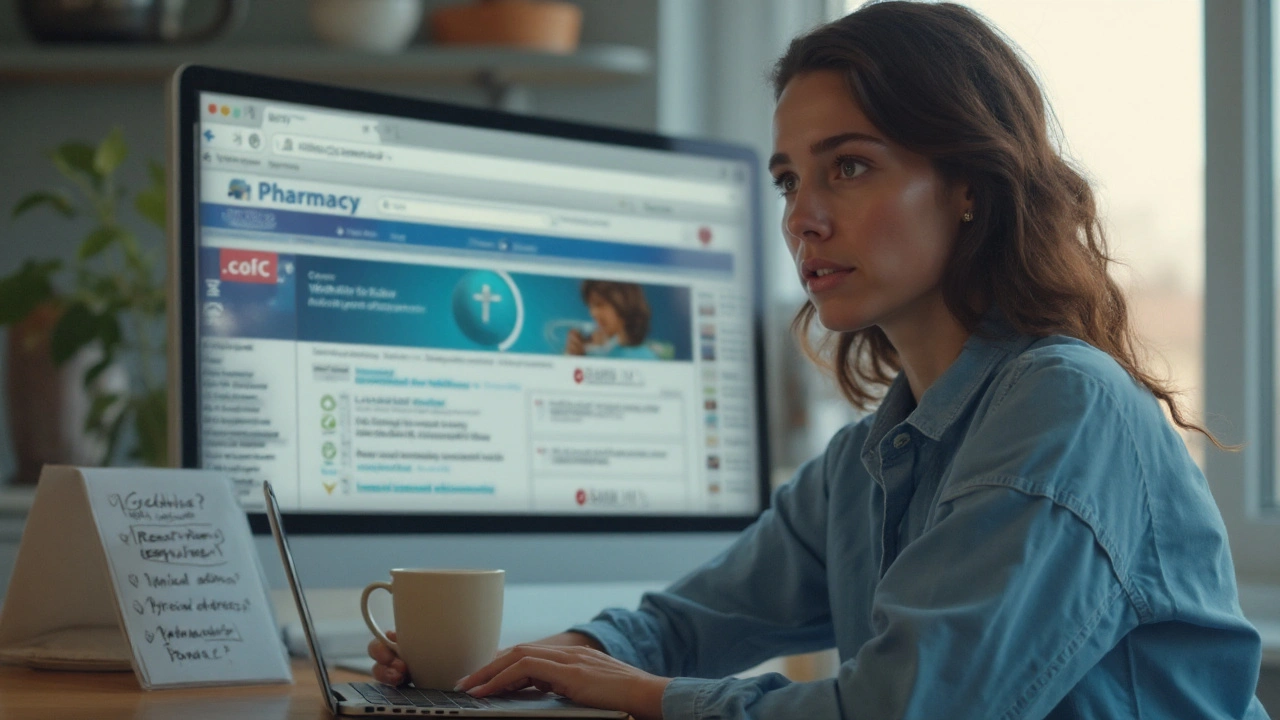How to Verify an Online Pharmacy – Simple Steps for Safe Buying
If you’ve ever searched the internet for a cheap prescription, you know how tempting shady offers can look. A tiny discount often hides risky sites that sell counterfeit pills or steal your data. The good news? You don’t need a legal degree to tell a legit pharmacy from a scam. Follow this short checklist and shop with confidence.
Check the License and Location
The first thing you should do is look for a clear licence number. Reputable pharmacies display their national or regional registration on the homepage, often linked to a government database. In the UK, look for a General Pharmaceutical Council (GPhC) registration; in Australia, the Therapeutic Goods Administration (TGA) seal; and in the US, a NABP .pharmacy domain or state pharmacy board link. Click the licence link – if it leads nowhere or shows an error, walk away.
Verify Contact Details
A real pharmacy will give you a physical address, phone number, and email that actually work. Test the phone line; a recorded message or a busy‑signal is a red flag. Google the address – does it belong to a medical office or a warehouse? If the only contact option is an online form, treat the site with caution.
Next, check for a pharmacist’s name and credentials. Many trustworthy sites list a licensed pharmacist who can answer questions. Lack of any professional staff info usually means you’re dealing with a reseller rather than a pharmacy.
Look for Secure Checkout
Before you enter payment details, make sure the site uses HTTPS – notice the padlock icon in the address bar. Also, reputable pharmacies accept only standard payment methods like credit cards or verified e‑wallets. If a site asks for wire transfers, cryptocurrency, or prepaid cards, it’s almost certainly a scam.
Read the privacy policy. It should explain how your personal health information is stored and protected. Vague or missing policies are another warning sign.
Compare Prices Wisely
If a price looks too good to be true, it probably is. Extremely low prices often mean the product is counterfeit, expired, or sourced from unregulated markets. Use a price‑comparison tool and check the average market cost for the medication you need.
Some legitimate pharmacies offer discounts but will never sell a prescription drug for pennies on the dollar. If you’re unsure, call your doctor’s office – they can confirm whether the pharmacy is recognized in their network.
Read Reviews and Ratings
Search for the site name plus words like “scam” or “review”. Independent forums, Trustpilot, and Reddit threads often reveal user experiences. Look for patterns: repeated complaints about delayed shipments, wrong medication, or no response from customer service.
Don’t rely solely on the testimonials placed on the pharmacy’s own page – they’re usually fabricated.
Use Third‑Party Verification Services
Websites such as LegitScript, PharmacyChecker, and the NABP’s VIPPS program maintain up‑to‑date lists of approved online pharmacies. Enter the site URL into these tools; a green check means it passed safety standards.
If your pharmacy isn’t listed, ask why. Some reputable pharmacies simply haven’t applied for certification yet, but you should demand proof of their compliance.
Final Checklist Before You Order
- License number visible and verifiable?
- Physical address and working phone number?
- HTTPS secure checkout and reputable payment options?
- Price within normal market range?
- Positive, independent reviews or third‑party certification?
If you can answer “yes” to most of these, you’re likely looking at a safe online pharmacy. If anything feels off, trust your gut and keep searching.
Buying medication online doesn’t have to be risky – just follow the steps above and protect your health and wallet.
- Emma Barnes
- 12
Buy Generic Ativan (Lorazepam) Online in the UK Safely: Prices, Legal Rules, and Better Options in 2025
Want cheap generic Ativan online in the UK? Here’s how to do it legally, avoid fakes, check pharmacy credentials, compare prices, and consider safer alternatives in 2025.
Read more
